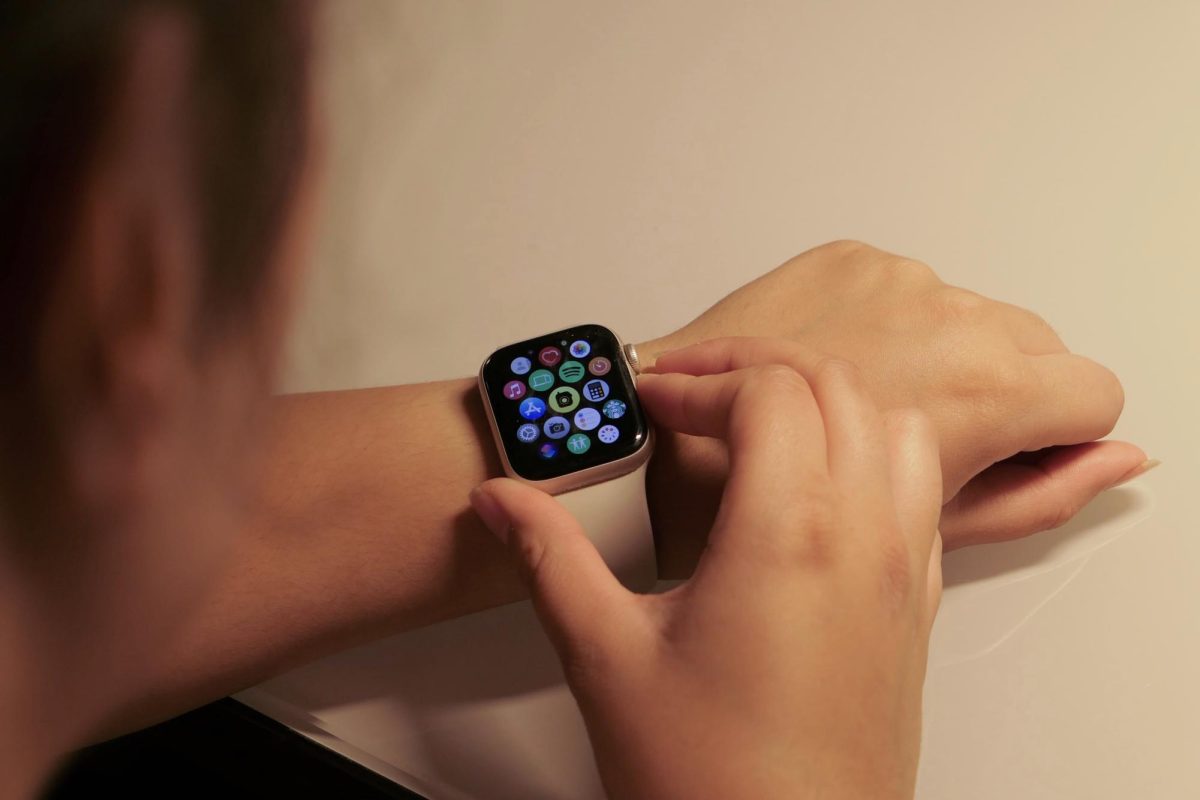Smartwatches are rapidly becoming the new widespread technology for youth, providing a wearable method of communication that sparks conflict when it comes to distractions.
Parents of elementary and middle school students are giving their children smartwatches as an alternative to phones. However, such decisions have sparked debate about whether or not a student is ready to exercise the self-control to continually ignore distractions the watch may present.
The wearable technology market has grown significantly since launching in the 2010s, with watches like the Apple Watch, which launched in 2015, gaining traction since then. Now, 21% of adults in the U.S. say they use a smartwatch or fitness tracker, according to Pew Research Center.
According to Statista, Apple is the most popular smartwatch brand, with 56% of smartwatch users, followed by Fitbit with 24%.
Dance instructor Camryn Walsh said that she finds watches more harmful than helpful to her students.
“I feel like watches are very distracting in the less high-energy moments in class, like during stretch or water breaks, or waiting in line before going across the floor,” Walsh said. “They will text people or just scroll. It’s basically the same thing as a phone.”
Students don’t feel the technology is as much of an issue. Eighth-grader Maren Huoh finds keeping in touch one of the most useful features of her smartwatch.
“I use it mostly for communication, but I can also use the calculator, which is really nice,” Huoh said.
In agreement with Huoh, Skylar Kuo, a sixth-grader who has had her watch since fourth grade, also finds it helpful to be able to stay in contact with her parents throughout the day.
“It’s been helpful to have a mode of communication,” Kuo said. “Sometimes I don’t know who’s going to pick me up or where they’re going to pick me up.”
Contrasting Walsh, Huoh thinks watches aren’t distracting for her and her peers.
“I haven’t really seen people super distracted by it because you can silence notifications on it, so if you get a text message, it won’t ding,” Huoh said. “If you’re not constantly on it, I don’t think it’s that big of a distraction.”
Huoh also noted that the consequences of using a watch in the classroom depend on the teacher.
“I think teachers are more relaxed about watches than phones because you can do a lot more with a phone than a watch,” Huoh said. “But if you’re constantly on it, then obviously they’ll tell you to take it off.”
Concurring with Huoh, Walsh emphasized that consequences are important if a student becomes distracted.
“It is 100% the student’s responsibility to focus in class,” Walsh said. “If they can’t do it, I tell them to take the watch off and not wear it to my class.”













